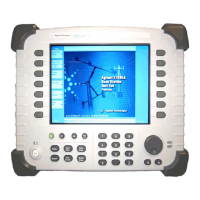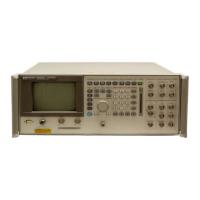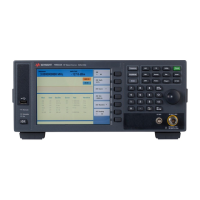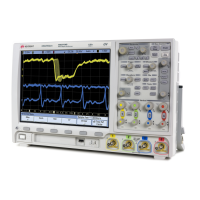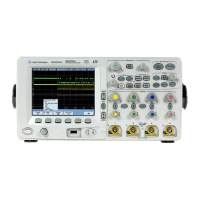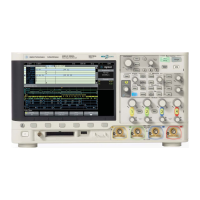Chapter 3 73
Making EDGE (with GSM) Measurements
Making the Output RF Spectrum Measurement
The FFT method acquires a wideband signal (1.55 MHz) in a flattop
filter. An FFT is performed to get the spectrum of the GSM signal. The
resolution bandwidth filter can now be applied mathematically to the
spectrum at multiple offsets, with an inverse-FFT performed on the
data which passes the filter. In this way, multiple offsets are acquired
from one time record and LO setting. Since the resolution bandwidth
filter is a mathematical formula, it can be any shape and size, and is
perfect. The VSA uses the 5-pole synchronously tuned filter that the
GSM standard specifies.
The primary disadvantage to the FFT method is that the acquisition
must include the carrier. The high energy of the carrier causes the ADC
to range down, thus lowering the dynamic range. At large offsets, the
dynamic range requirement is very challenging so the direct time
domain (DTD) method is used. The LO is tuned to the particular offset
and the pre-ADC filter is used to reduce the carrier. This allows the
ADC to range up, giving higher dynamic range. The disadvantage to
this method is that each offset measured has its own time record
acquisition and LO tune position, and this causes the measurement to
slow down compared to FFT offsets. The 5-pole synchronously tuned
filter is approximated by utilizing a digital Gaussian filter and setting
its equivalent noise bandwidth to that of the 5-pole synchronously
tuned filter. For these DTD offset frequencies, the filter has
closer-to-ideal 5-pole behavior (< 1% tolerance) than does a 10%
tolerance, 5-pole analog filter.
Regardless of how the time record is obtained for a particular offset, the
power must be measured and compared to the reference power. There
are two measurements being made for the test: output RF spectrum
due to modulation and the output RF spectrum due to switching
transients. The GSM standard specifies which offsets get which tests.
In these two modes, the following conditions are met:
• In the output RF spectrum due to modulation measurement, the
average value during at least 40 bits between bit 87 and 132
(approximately equivalent to the 50% to 90% portion of the burst,
excluding midamble) is retained. The vertical lines mark the section
of the burst over which the measurement is made. If multiple bursts
are examined, an average of the average values is calculated. The
relative power (difference between the average power of the burst at
zero offset and the average power of the burst at the indicated offset)
and the absolute power are displayed.
• In the output RF spectrum due to switching transients, the peak
value of the burst is retained. If multiple bursts are examined, then
the maximum of the peak values is retained. The relative power
(difference between the peak power of the burst at zero offset and
the peak power of the burst at the indicated offset) and the absolute
power are displayed.

